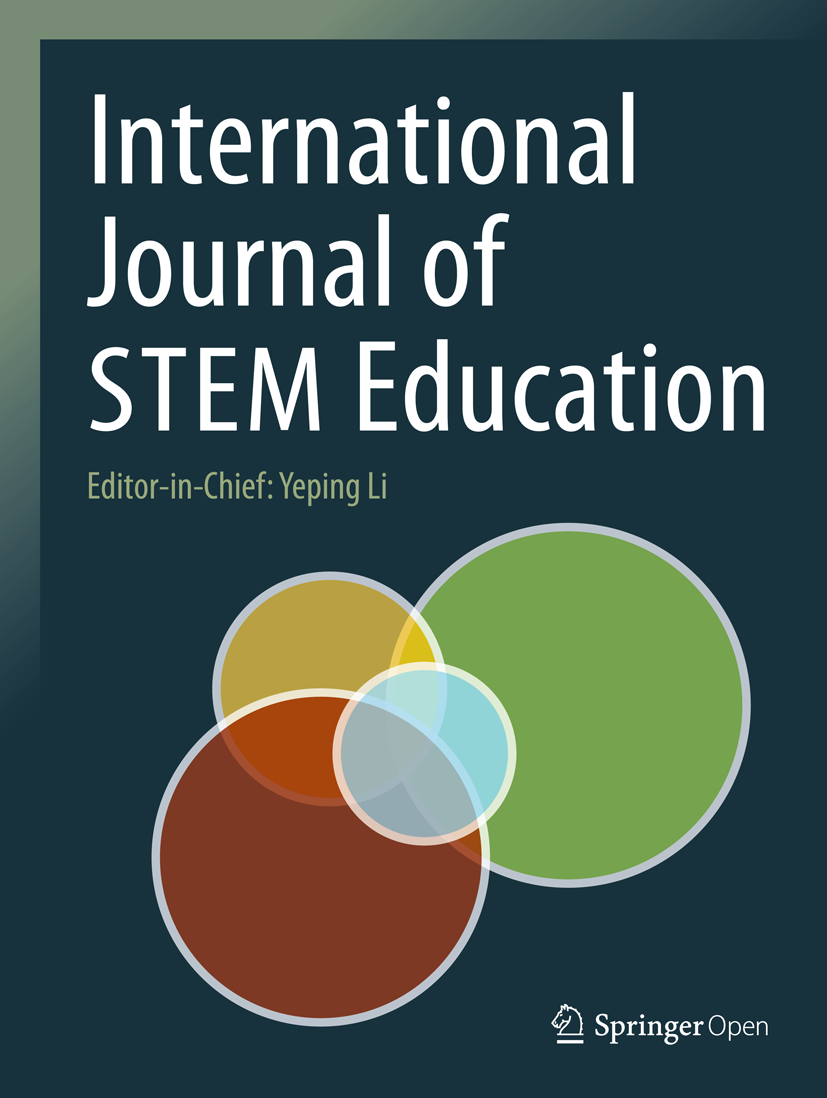Exploring the multifaceted roles of mathematics learning in predicting students' computational thinking competency
IF 8
1区 教育学
Q1 EDUCATION & EDUCATIONAL RESEARCH
引用次数: 0
Abstract
Abstract Background There exist shared competencies between computational thinking (CT) and mathematics, and these two domains also mutually benefit from various teaching approaches. However, the linkages between mathematics and computational thinking lack robust empirical support, particularly from student-centered learning perspectives. Our study aimed to enhance our understanding of the connections between students' mathematics learning and computational thinking. To assess students' mathematics learning, we measured their beliefs about mathematics learning and their level of mathematical literacy (ML). Our hypothesis posited that students' beliefs concerning mathematics learning, encompassing their views on the nature of mathematics and their attitude towards the subject, can both directly and indirectly influence their CT, with ML serving as a mediating factor. Our data were gathered through surveys and tests administered to eighth- and ninth-grade students. Data were analyzed using partial least squares–structural equation modeling (PLS–SEM). Results The evaluation of the measurement model indicated strong internal consistency for each construct. Both convergent and discriminant validity were also established. Upon assessing the structural model, it was found that beliefs about the nature of mathematics positively predicted attitudes towards mathematics, and this belief also indirectly predicted ML through positive attitudes towards mathematics. In addition, ML directly and positively predicted both CT subscales. Notably, a comprehensive mediating effect of ML on beliefs about mathematics learning and CT was identified in the analysis. Conclusions This study advances the understanding of the relationships between mathematics learning and CT. We have further confirmed the importance of mathematical literacy in predicting CT and its mediating role between beliefs about mathematics learning and CT. It is suggested that teachers could promote students’ CT competence by enhancing their mathematical literacy or integrating mathematics and CT into the same learning activities. Finally, we propose that upcoming investigations treat CT assessments as formative constructs, diverging from their reflective counterparts.探索数学学习在预测学生计算思维能力方面的多重作用
计算思维与数学之间存在着共同的能力,这两个领域也从不同的教学方法中相互受益。然而,数学和计算思维之间的联系缺乏强有力的实证支持,特别是从以学生为中心的学习角度来看。我们的研究旨在加深我们对学生数学学习与计算思维之间联系的理解。为了评估学生的数学学习,我们测量了他们对数学学习的信念和他们的数学素养水平。我们的假设假设学生对数学学习的信念,包括他们对数学本质的看法和他们对学科的态度,可以直接和间接地影响他们的CT, ML是一个中介因素。我们的数据是通过对八年级和九年级学生的调查和测试收集的。数据分析采用偏最小二乘结构方程模型(PLS-SEM)。结果对测量模型的评价表明,各结构的内部一致性较强。并建立了收敛效度和判别效度。通过对结构模型的评估,我们发现关于数学本质的信念可以正向地预测对数学的态度,并且这种信念也通过对数学的积极态度间接地预测ML。此外,ML直接和正向预测两个CT分量表。值得注意的是,在分析中发现了ML对数学学习信念和CT的综合中介作用。结论本研究促进了对数学学习与CT之间关系的认识。我们进一步证实了数学素养在预测CT中的重要性及其在数学学习信念与CT之间的中介作用。建议教师通过提高学生的数学素养或将数学与计算机科学整合到同一学习活动中来提高学生的计算机科学能力。最后,我们建议即将进行的研究将CT评估视为形成性构式,与反思性构式不同。
本文章由计算机程序翻译,如有差异,请以英文原文为准。
求助全文
约1分钟内获得全文
求助全文
来源期刊

International Journal of Stem Education
Social Sciences-Education
CiteScore
12.40
自引率
11.90%
发文量
68
审稿时长
13 weeks
期刊介绍:
The International Journal of STEM Education is a multidisciplinary journal in subject-content education that focuses on the study of teaching and learning in science, technology, engineering, and mathematics (STEM). It is being established as a brand new, forward looking journal in the field of education. As a peer-reviewed journal, it is positioned to promote research and educational development in the rapidly evolving field of STEM education around the world.
 求助内容:
求助内容: 应助结果提醒方式:
应助结果提醒方式:


